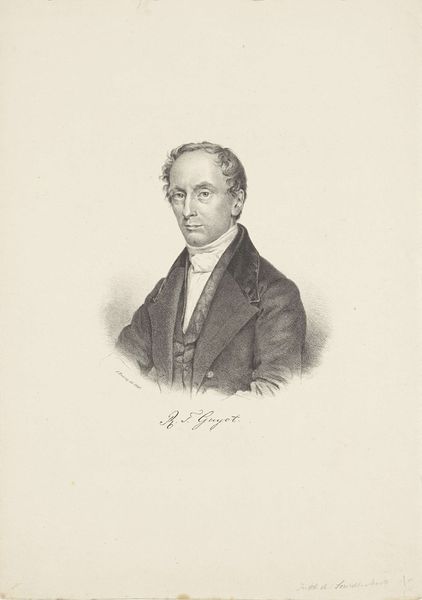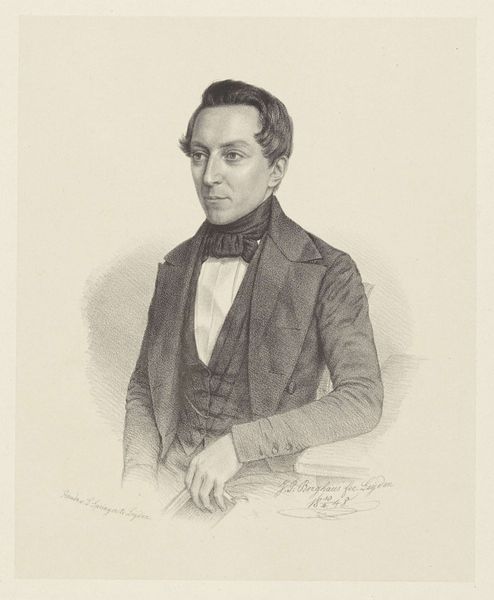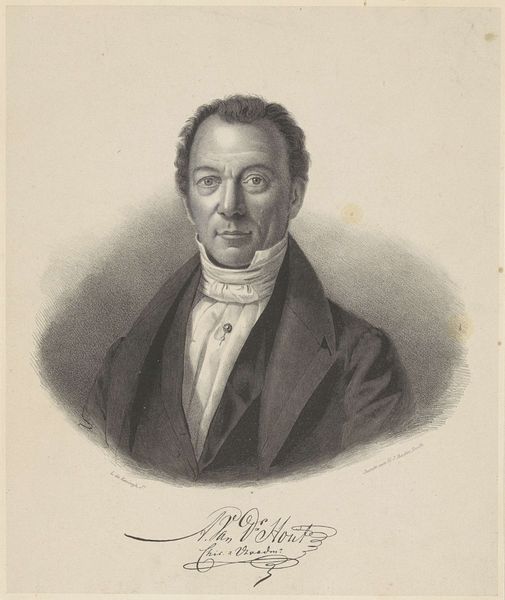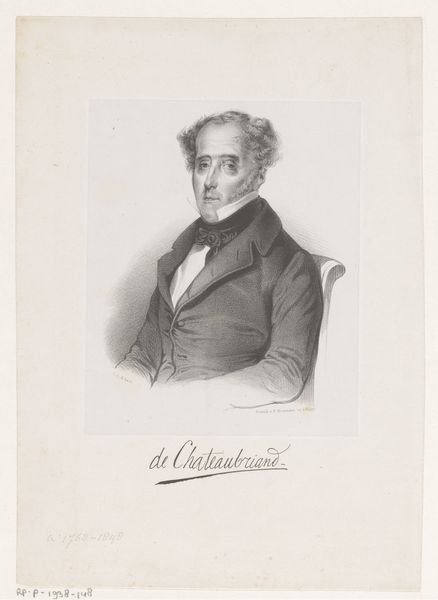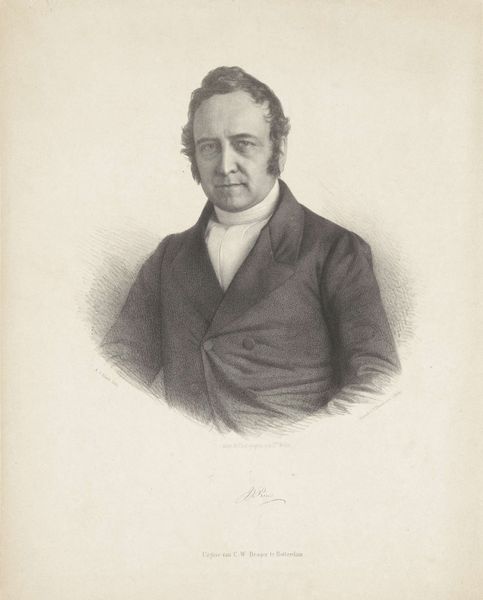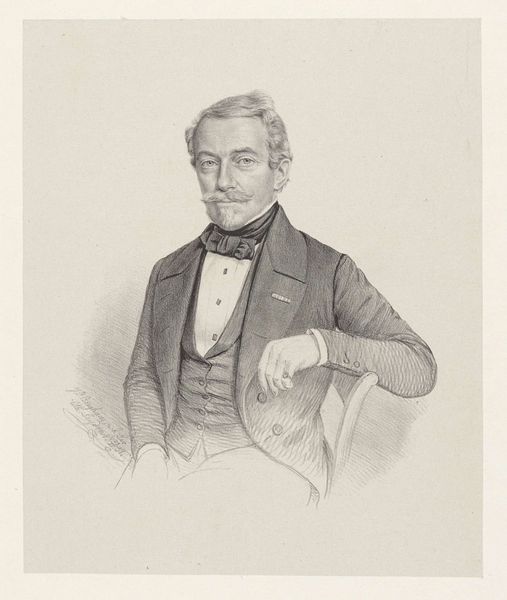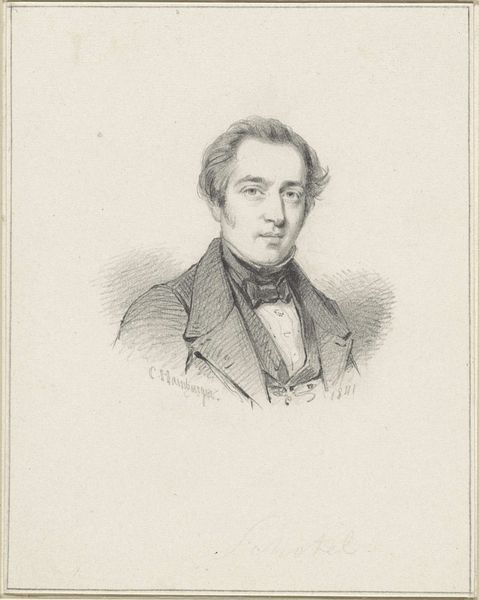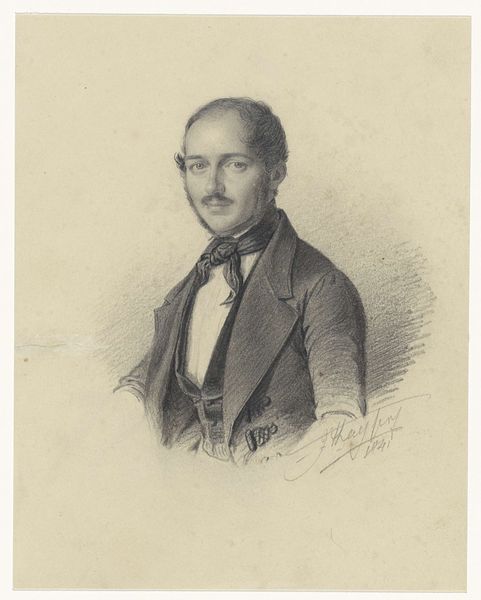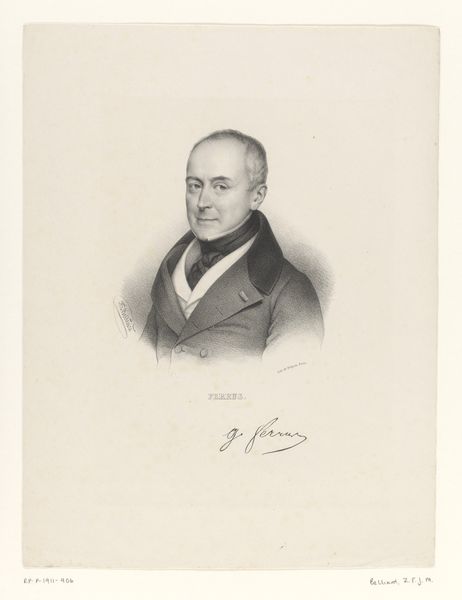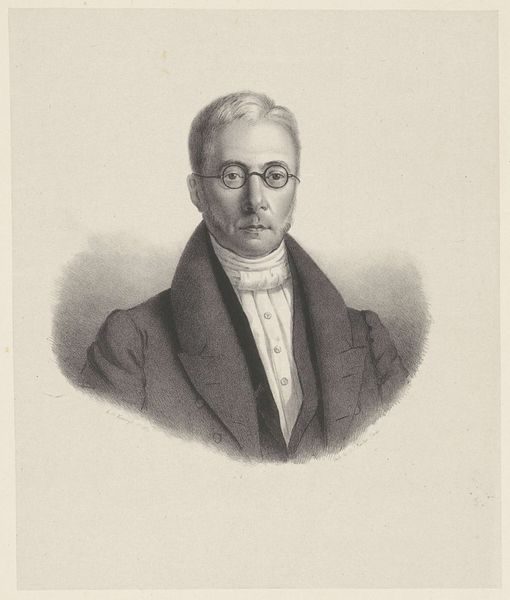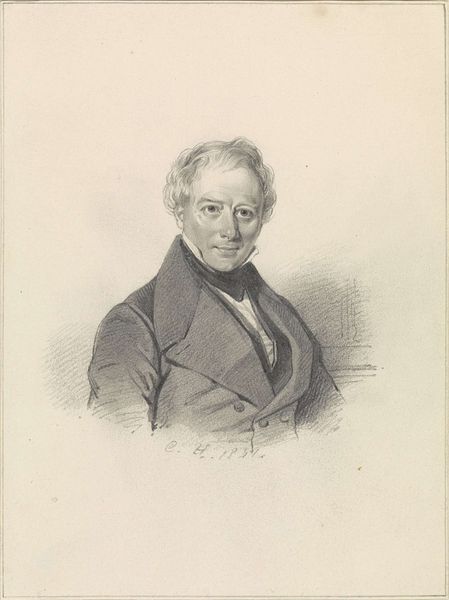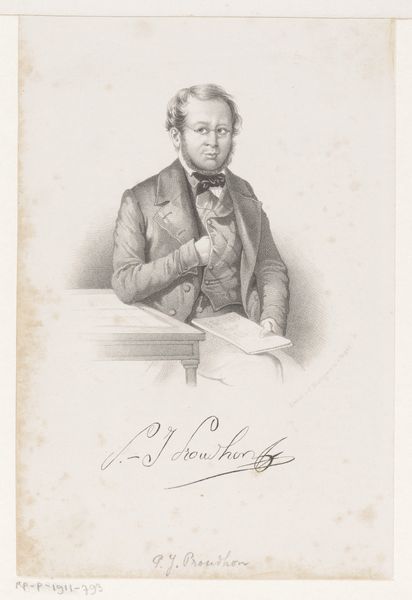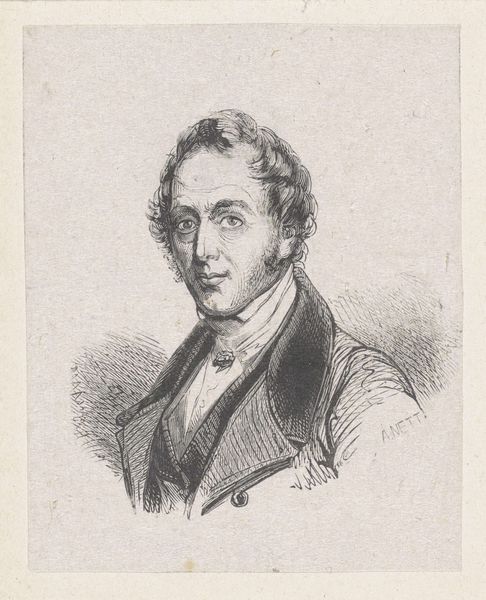
drawing, pencil
#
portrait
#
pencil drawn
#
drawing
#
pencil sketch
#
portrait reference
#
pencil drawing
#
pencil
#
portrait drawing
#
academic-art
#
realism
Dimensions: height 383 mm, width 270 mm
Copyright: Rijks Museum: Open Domain
Curator: This pencil drawing, created around 1840 by Jan Ensing, is a portrait of C. Guyot. It resides here in the Rijksmuseum. It’s remarkable for its delicate shading. Editor: The precision does strike you first. A sense of restrained formality, almost severe—the way the lines are so controlled. But his eyes, they tell a different story. I sense a vulnerability beneath that composure, the kind men often felt pressured to conceal at the time. Curator: It's interesting you pick up on vulnerability. Portraiture then, especially of men, often leaned into conveying power and stability. The detailed rendering is indeed indicative of its time, the academic art style. The shading gives depth to the man's coat and features, creating a very lifelike quality. This image echoes the visual language being employed during the rise of photography. Editor: The contrast is compelling, particularly concerning identity. I keep returning to that conflict: this carefully constructed public image and those searching, almost pleading eyes. How much of this was Ensing's interpretation and how much was C. Guyot projecting what he thought was expected? Was the likeness made to conform to patriarchy of the time, the way we are asked to express gender even now? Curator: Considering what was considered "masculine" or "proper" back then helps unpack that. What also stands out is the overall simplicity. The portrait relies entirely on Ensing's skillful handling of the pencil. Look closely—the way light and shadow are used to suggest volume and texture in his clothing, hair and eyes, so detailed, but not necessarily symbolic on the surface, I would suggest the symbols rest within this display of light, this human form captured by graphite. Editor: Yes, there's an interesting tension there. While formally representing the subject's status, I keep considering how we interpret those historical constructs now. Portraits from this period often become accidental records of not only the individual but the social constraints of that time. To truly capture someone with pencil is not that unlike the goal of any human interaction: mutual and equitable revelation. I find the very humanity depicted quite refreshing. Curator: It makes you ponder who he was. Thank you for sharing this very modern outlook on an historical likeness. Editor: A necessary inquiry; my pleasure.
Comments
No comments
Be the first to comment and join the conversation on the ultimate creative platform.
